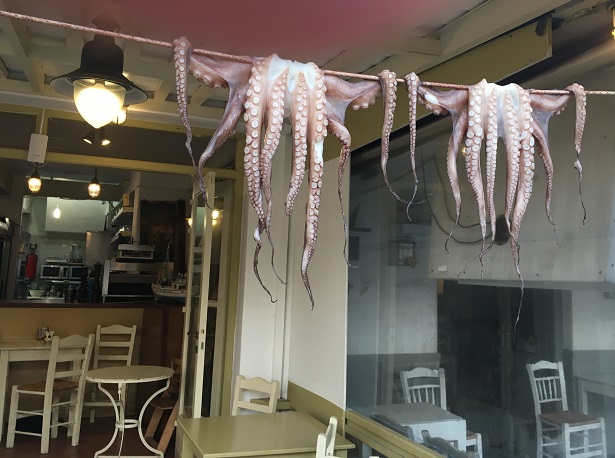
At the windy, chilly tail end of the tourist season, Thor and I left the beach behind to explore more of the island’s interior.
NOTE: Since our recent trip to Greece to research more settings for my novel-in-progress, THE ARIADNE DISCONNECT, Thor and I knew we had to return to this magical region. My first entry in this new blog series posted here on Saturday, 10/20/2018. It gives an overview of our rambles from Athens to seven islands in the Dodecanese and Cyclades groups, ending our ferry-hopping pilgrimage on the anciently sacred island of Delos.
The more things change in Greece, the more they seem to stay the same — at least with certain traditions. There will always be an octopus or two hanging near a taverna, after a tenderizing beating on the rocks. Because I’ve spent a lot of time scuba diving and making acquaintance with these intelligent creatures, I can’t bring myself to eat them. But they’ve obviously been important to Greek art and cuisine for thousands of years.
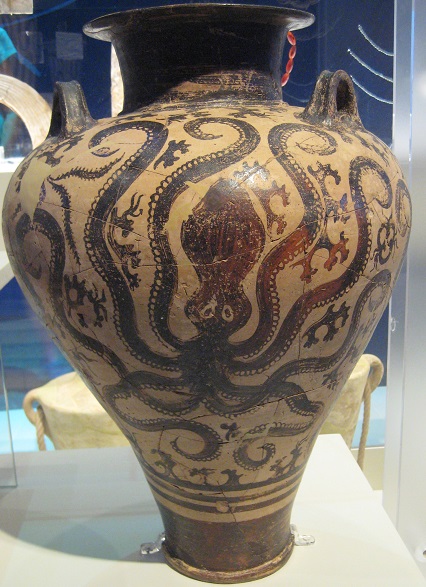
Following a combination of paper maps (Sara) and Siri (Thor’s perky new iPhone enamorata), we headed for the steep hills with a vague idea of checking out another rumored Venetian tower among the scattered villages. We passed the usual rocky terraces and small chapels that dot the landscape.
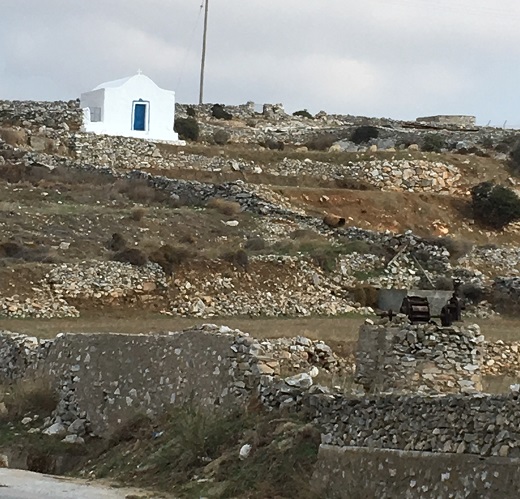
A large reservoir was clearly awaiting some replenishing winter rains and runoff.
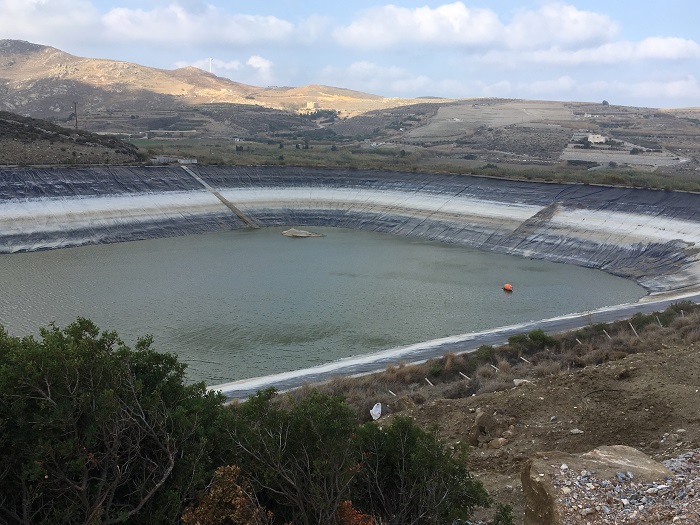
Electricity-generating windmills are a common sight now in Greece, as part of efforts to be sustainable.
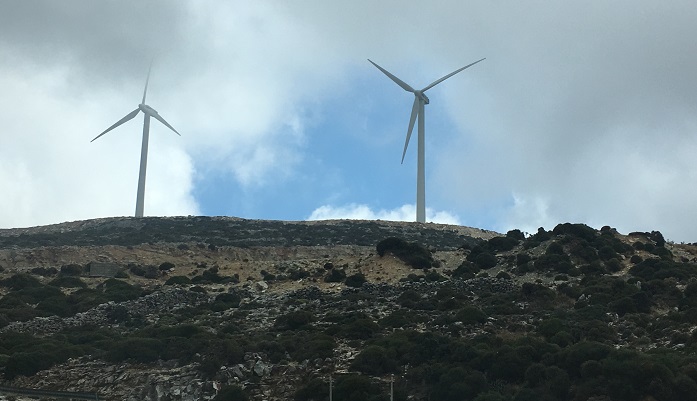
Many centuries-old stone windmills, used for grinding grains and pumping water, still survive though sadly missing their cloth sails.
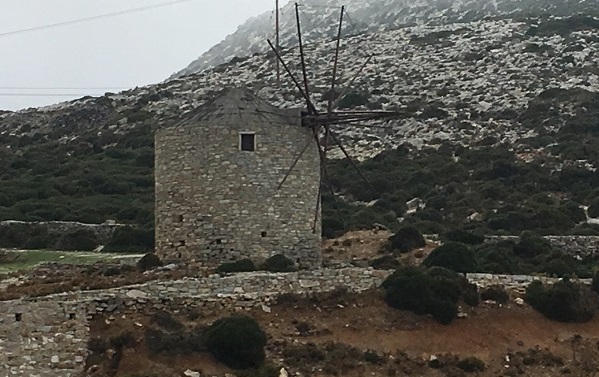
There will always be tiny chapels in the most unlikely and inconvenient places, like this one perched on the windswept top of a sheer, rocky mount.
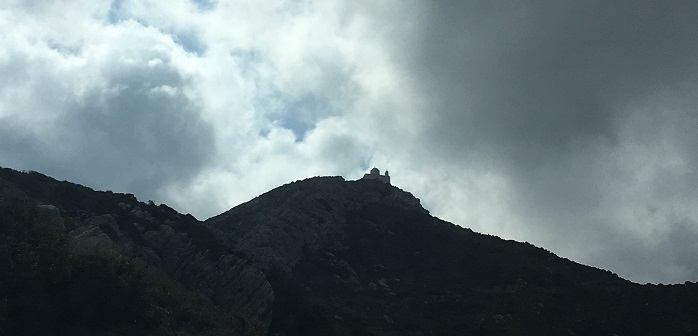
We passed an impressive marble quarry hacked out of one mountainside. Marble is still an important building material in a country where suitable lumber can be scarce.
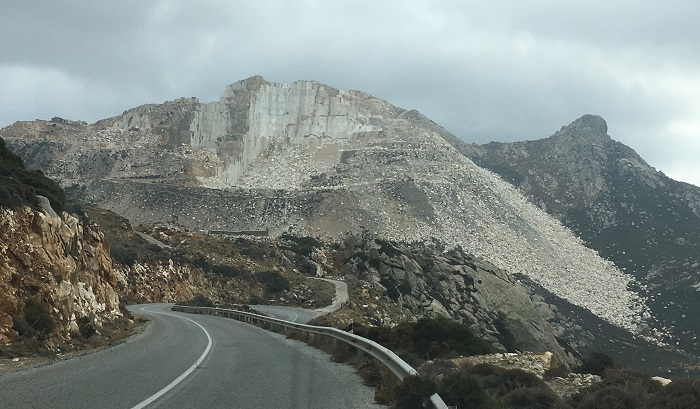
The Greek islands were once covered with verdant forests, much of them cut down for Venetian ship-building during that occupation. I once read about a study concluding that the islands could be reforested quickly if all the goats were eradicated. But Greeks without their endearing, wandering goats? Not likely!
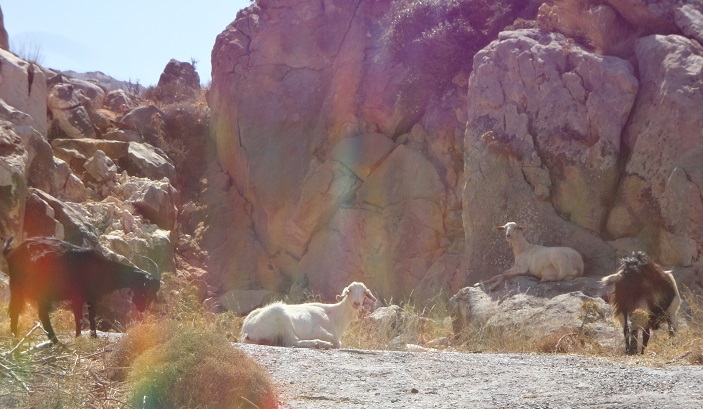
You may recall an earlier visit Thor and I made to the ancient marble quarry near Apollon, where the unfinished kouros statue of Dionysos still lies where it was roughed out in situ. A very different operation in those days.
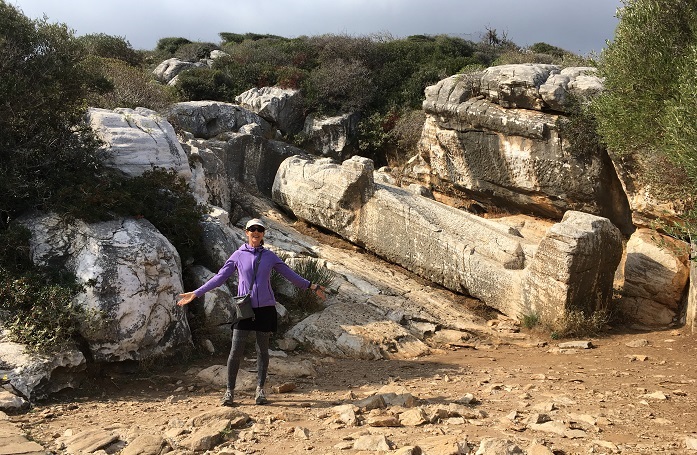
As Thor and I drove past and through some mountain villages, we kept seeing various signs for the Tower of Belogna, but couldn’t manage to locate anything but various scattered stone blocks in fields. Navigating back roads in Greece is always tricky, since there are few road signs, and the long names in Cyrillic alphabet can be a real challenge on the signs that do exist, when there isn’t an English translation. Thor fired up his phone to ask Siri for directions, and she took us on a route back up into the mountains where we’d already gone, then down a wrong turn through a village with lanes wide enough for only one car. Thor was sweating and mumbling vague threats to the phone by that time.
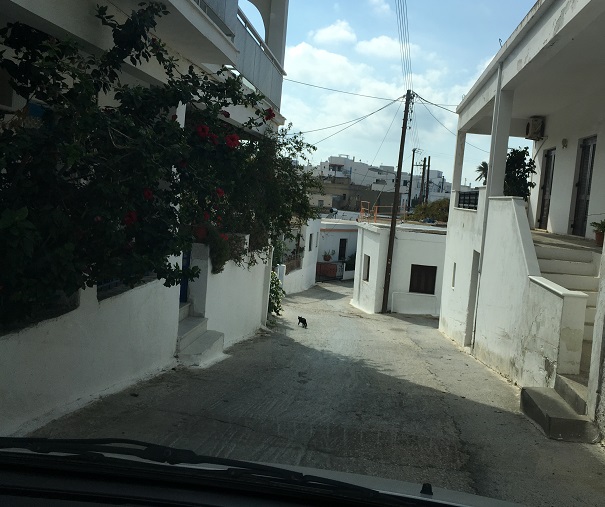
We couldn’t seem to find a way out of the narrow labyrinth, as Thor prayed another car wouldn’t come toward us. Finally we flagged down a young woman on a scooter, who had very little English but understood “highway,” and pointed us toward a lane out.
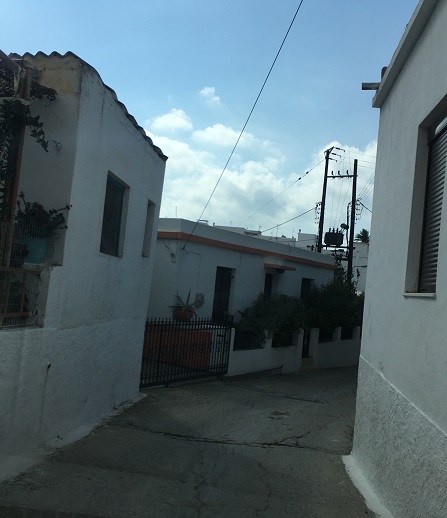
This was not the first time we’d ended up trapped in narrow village lanes after main roads suddenly peter out and send you without guidance through the village. I think this is where you are supposed to pray to the icons hanging on your rear-view mirror (in our case, a protective blue bead) for help. The previous year, before the advent of Siri in our lives, I managed with a map and sign language to get help from a local man. I always enjoy these little interactions, and the Greeks are eager to help, part of their long tradition of philoxenia — love of the stranger. A wonderful tradition we should all remember here in the States!
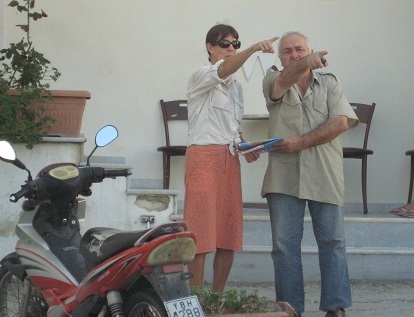
Back on a main road, Siri was sulking because I countermanded her advice with help from my map. She rattled off another wrong turn instruction in long Greek road names, and I put my foot down: “She’s taking us back up the mountain! We want to go down!” We headed downhill and somehow managed to run into the rumored Tower of Belogna (or Belonia).
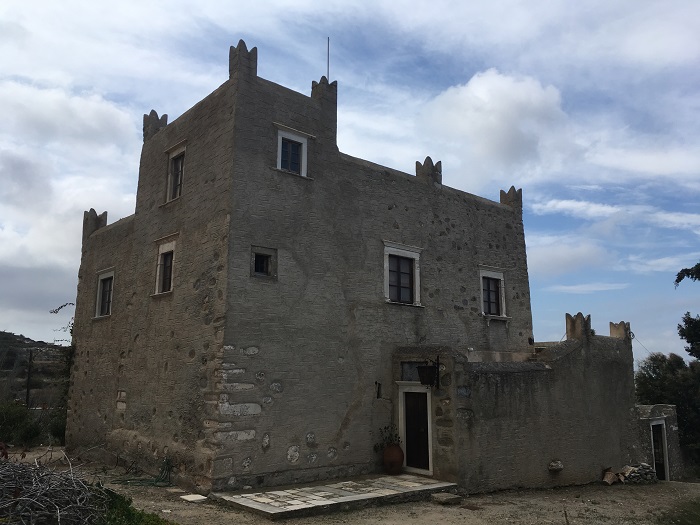
There were many of these fortified dwellings built by the Venetians. This one, built around 1600 A.D., has been maintained in excellent shape, as it is still a residence. Unfortunately, it was closed to tours that day, but we enjoyed checking out the exterior.
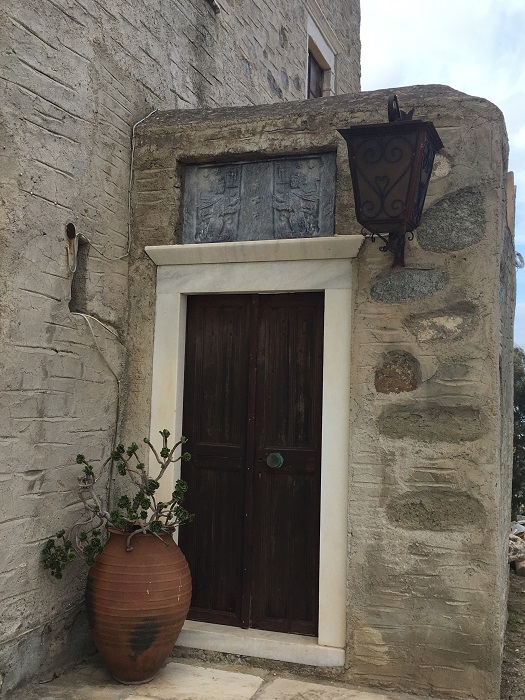
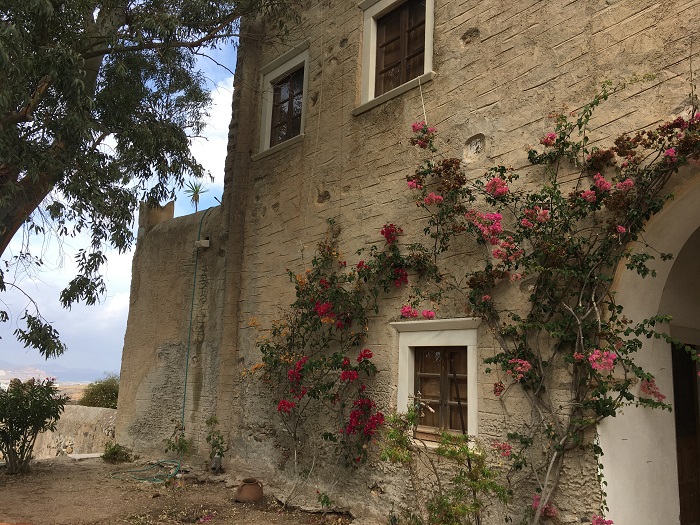
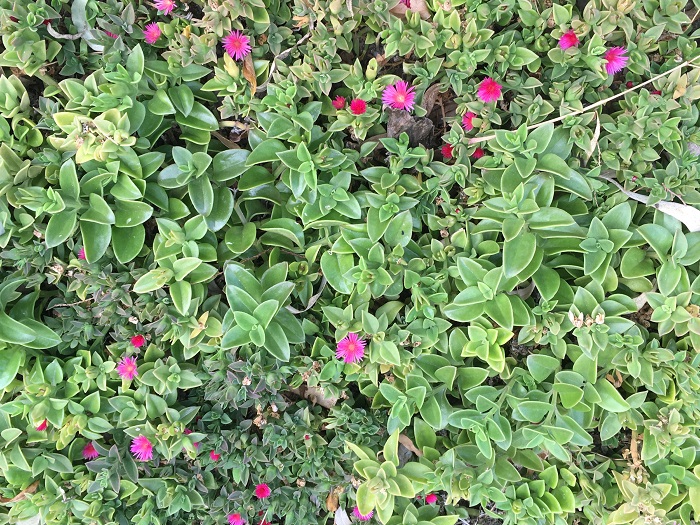
An adjacent small chapel built in the 13th century, Agios Ioannis (St. John), apparently has 2 aisles — one for Catholics and one for Orthodox worshippers.
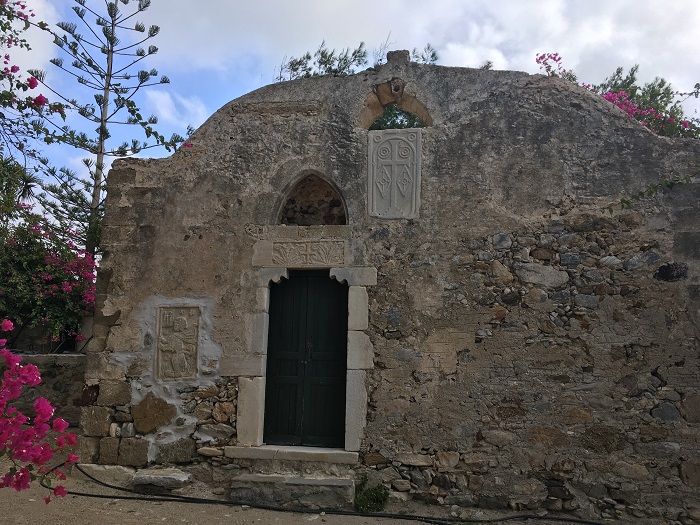
Does anyone know what this interesting image is on a carved marble plaque inset into the church facade?
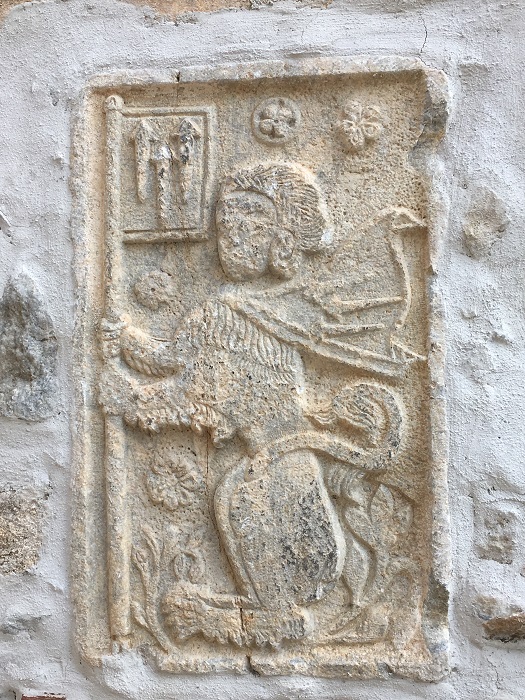
Next, we started meandering down roads leading back toward the sea, thinking we might try for a brisk afternoon swim after our heroic explorations. We had to stop to check out this lovely church and its adjacent cemetery.
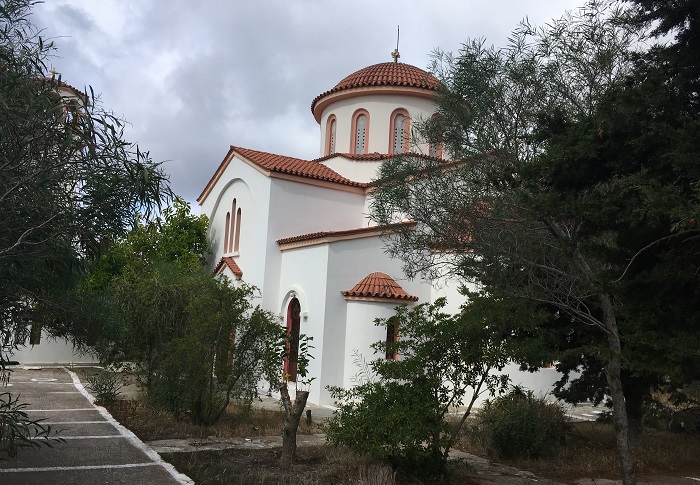
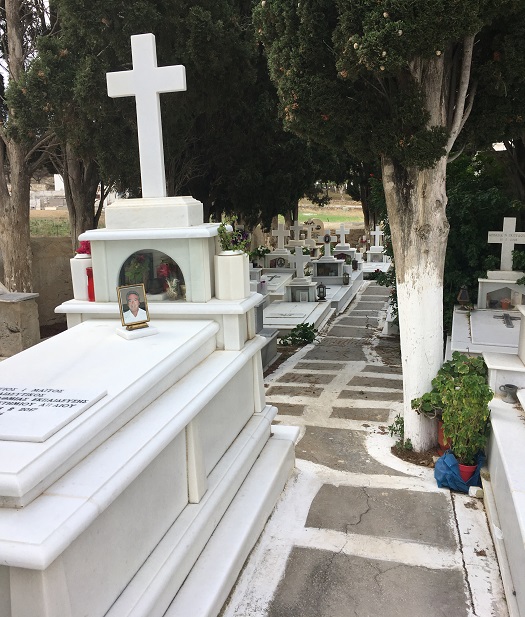
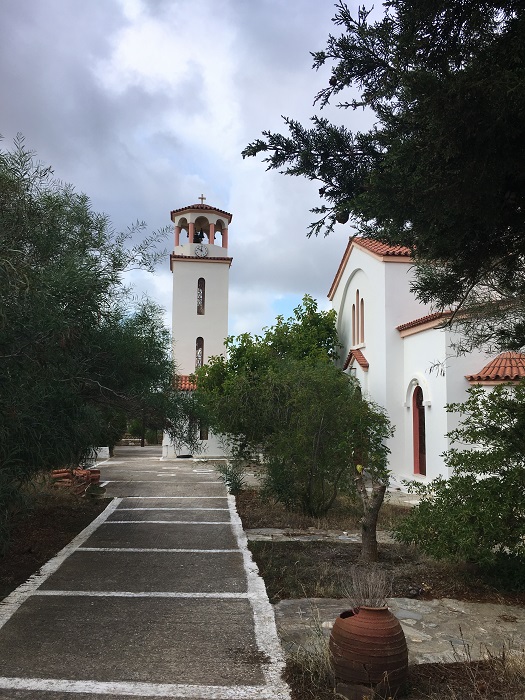
Thor and I both love to visit cemeteries to witness the history and different ways that people honor their loved ones. This portrait was so lively!
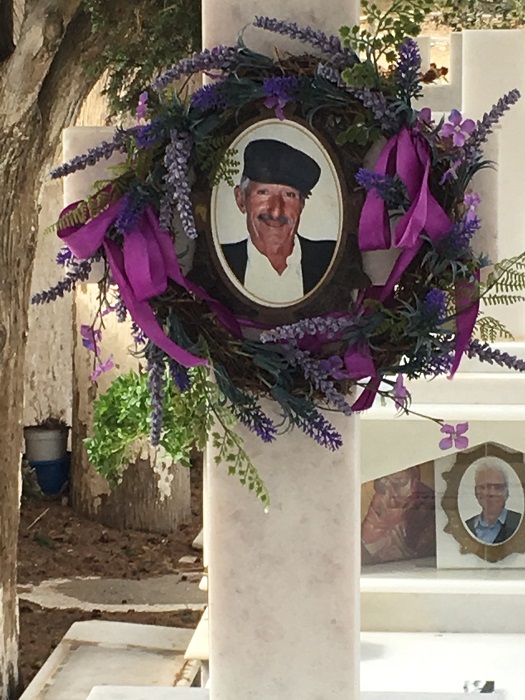
Icons are commonly installed behind protective glass on the crypts.
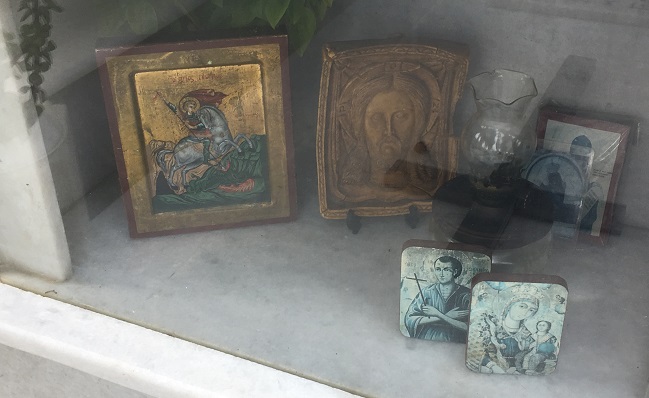
This woman must have been an avid gardener, with well-tended plants honoring her:
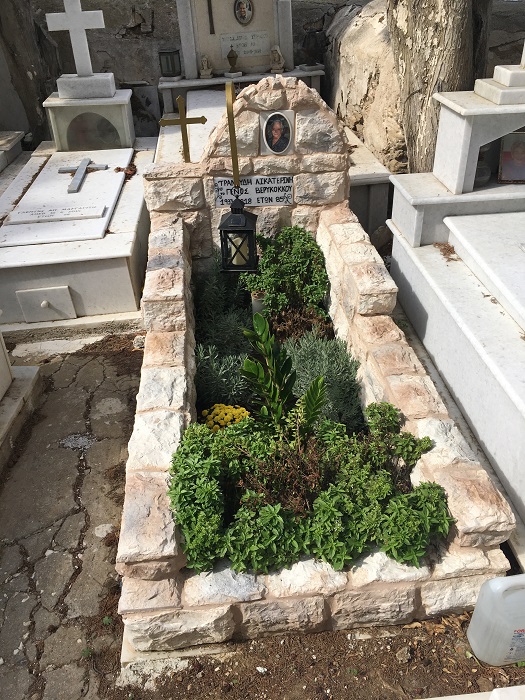
I can’t resist repeating this photo from the previous year and another Naxos cemetery (the weather very different that year, too, with that vivid blue Greek sky). This shrine is a distinctive work of art for a young man who is clearly sorely missed:
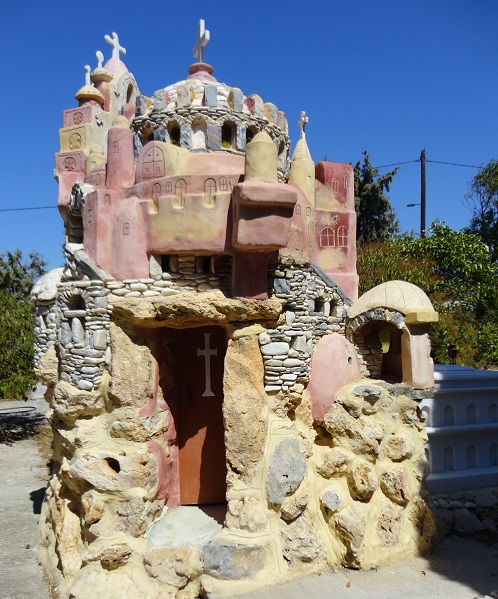
By luck or by map — or perhaps Siri had stopped sulking — we found a dirt lane that led us by a new route to a favorite beach from the previous year — long, sandy Plaka. It was a brisk swim, but as always, the clear blue Aegean Sea worked its magic for us. Chairete! Rejoice!
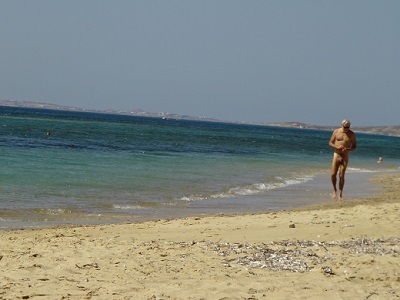
Next week: The serene beauty of the ancient Sanctuary of Demeter.
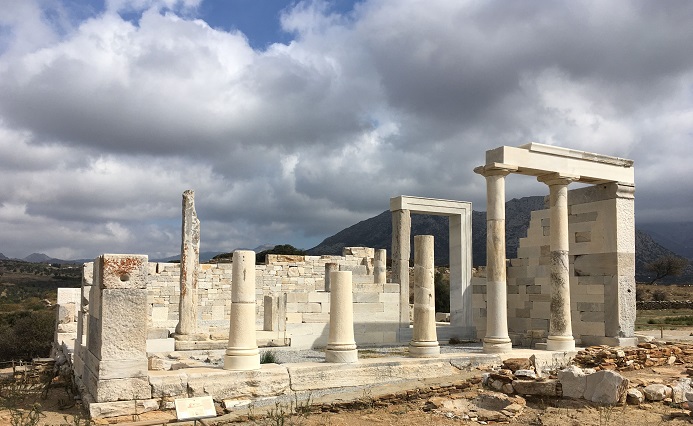
*****
You will find The Rambling Writer’s blog posts here every Saturday. Sara’s latest novel from Book View Cafe is available in print and ebook: The Ariadne Connection. It’s a near-future thriller set in the Greek islands. “Technology triggers a deadly new plague. Can a healer find the cure?” The novel has received the Chanticleer Global Thriller Grand Prize and the Cygnus Award for Speculative Fiction. Sara has recently returned from another research trip in Greece and is back at work on the sequel, The Ariadne Disconnect. Sign up for her quarterly email newsletter at www.sarastamey.com

Wonderful juxtaposition of octopus draped like dishrags with the ancient image on an urn! And I loved learning the term philoxenia. I think Siri deserves to be turned off! Was that Achilles on the beach? LOL
Actually, it was Dionysos coming down the beach to rescue poor abandoned Ariadne! And they lived happily ever after.